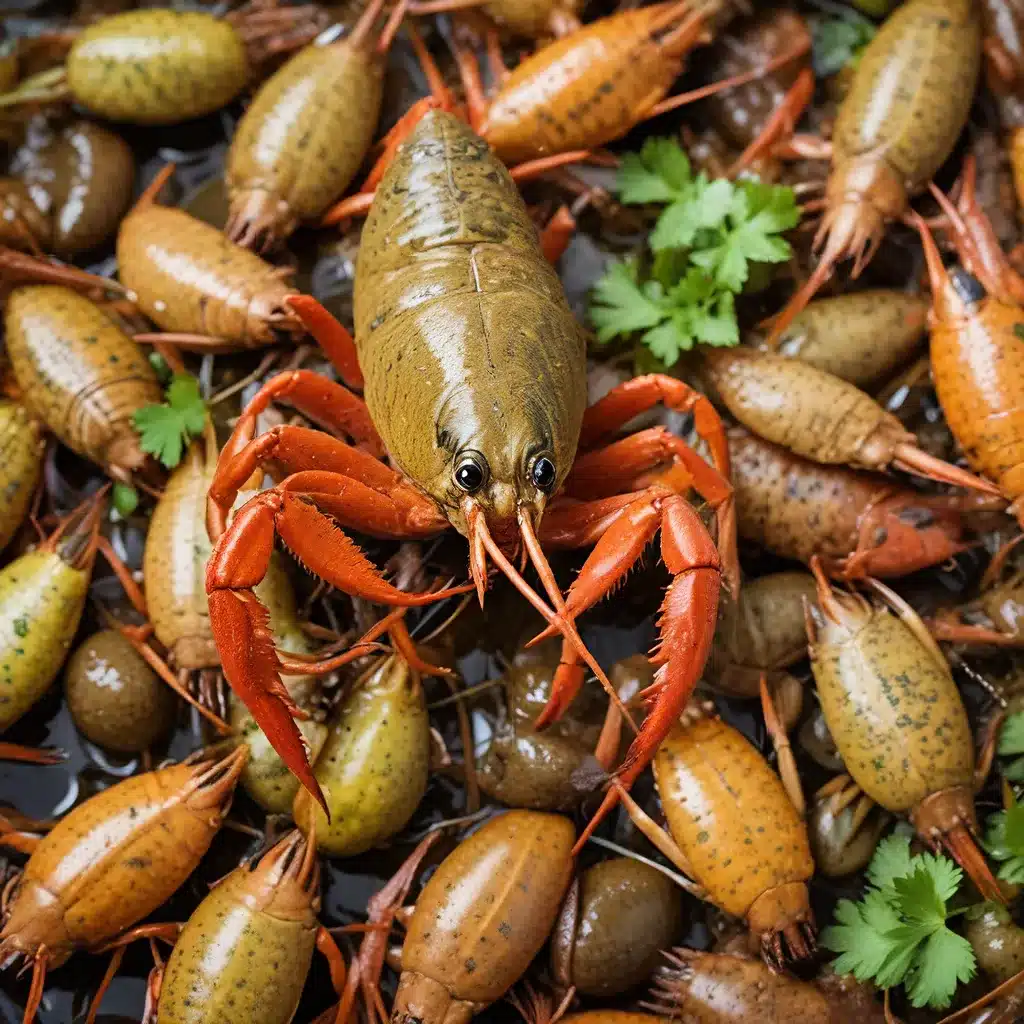
Unraveling the Mystery of Murray Crayfish
Nestled in the serene waterways of Australia, the Murray crayfish (Euastacus armatus) captivates aquarium enthusiasts with its striking appearance and intriguing behavior. As a member of the King Aquarium community, you’ve likely encountered this species and its unique care requirements. In this comprehensive guide, we’ll delve into the fascinating world of the Murray crayfish, exploring its habitat, dietary needs, and the nuances of providing the ideal aquatic environment for these remarkable crustaceans.
Habitat and Habitat Requirements
The Murray crayfish is native to the southeastern regions of Australia, thriving in the cool, fast-moving streams and rivers of the Murray-Darling basin. These crayfish are adapted to life in well-oxygenated waters, often seeking refuge under rocks, logs, and aquatic vegetation. In the aquarium setting, it’s crucial to replicate these natural conditions to ensure the health and well-being of these captivating creatures.
When setting up a Murray crayfish aquarium, consider a tank size of at least 30 gallons (113 liters) to provide ample space for these active crayfish to roam and burrow. The water temperature should be maintained between 60-70°F (15-21°C), and a strong filtration system is essential to maintain high levels of dissolved oxygen and water quality. Provide a substrate of smooth river rocks, gravel, or sand, along with plenty of hiding spots, such as driftwood, caves, and live plants.
Dietary Considerations
The Murray crayfish is an omnivorous species, with a diverse diet that includes live plants, decaying organic matter, algae, and even small fish or invertebrates. In the aquarium, it’s important to provide a varied diet to meet their nutritional needs and promote optimal growth and health.
Offer a combination of sinking pellets or wafers, blanched vegetables (such as spinach, zucchini, or carrots), and occasional live or frozen foods like brine shrimp, bloodworms, or small feeder fish. Observe your crayfish’s feeding habits and adjust the portion sizes accordingly, as they can be voracious eaters. Ensure that any uneaten food is removed to maintain water quality and prevent ammonia buildup.
Territorial Behavior and Compatibility
Murray crayfish are known for their territorial nature and can be aggressive towards their own kind, especially when resources are limited. It’s generally recommended to keep Murray crayfish in a species-only aquarium or with other non-aggressive, peaceful tank mates, such as small tetras, rasboras, or corydoras catfish.
When introducing new crayfish, it’s essential to provide ample hiding spots and ensure that each individual has its own territory. This will help minimize the risk of fighting, limb loss, or even cannibalism. Additionally, be mindful of the crayfish’s molting cycle, as they can be particularly vulnerable during this time and may become more aggressive or territorial.
Aquascaping and Substrate Considerations
The Murray crayfish’s natural habitat is characterized by a diverse array of aquatic plants, rocks, and driftwood. In the aquarium, replicating this aquascape not only enhances the aesthetic appeal but also provides the necessary cover and hiding spots for these crayfish to thrive.
When selecting a substrate, opt for a mixture of smooth river gravel and sand, which will allow the crayfish to burrow and create their own hiding spots. Incorporate live plants that are known to be crayfish-safe, such as Java moss, Anubias, or Cryptocoryne species. Driftwood and rocky formations can also serve as excellent hiding places and add visual interest to the aquascape.
Remember to regularly maintain the aquarium by performing partial water changes and vacuuming the substrate to remove any accumulated debris or waste. This will help ensure optimal water quality and create a thriving environment for your Murray crayfish.
Breeding and Reproduction
Breeding Murray crayfish in the aquarium setting can be a rewarding yet complex endeavor. These crayfish exhibit a unique reproductive cycle, with females carrying their fertilized eggs attached to their swimmerets (appendages under the abdomen) for several months before the young hatch.
To encourage successful breeding, provide well-established, mature aquarium setups with ample hiding spots and stable water parameters. Maintain a male-to-female ratio of 1:2 or 1:3 to increase the likelihood of successful mating and egg development. During the breeding season, you may observe the female crayfish guarding her clutch of eggs and meticulously caring for them.
Once the young crayfish hatch, they will undergo a vulnerable larval stage before molting into their juvenile form. Provide appropriate-sized food and supplemental hiding spots to support the growth and development of the new generation.
Conclusion: Embracing the Crayfish Craze
The Murray crayfish, with its striking appearance and fascinating behavior, is a captivating addition to any aquarium enthusiast’s collection. By understanding the unique habitat requirements, dietary needs, and social dynamics of these crustaceans, you can create a thriving, sustainable aquatic environment that showcases the beauty and diversity of the aquarium hobby.
As you navigate the world of Murray crayfish, remember to always prioritize their well-being and provide the necessary care and attention they deserve. With the right aquascaping techniques, water management strategies, and species-specific knowledge, you can become a successful Murray crayfish keeper and share your passion with the broader aquarium community.

